Osteoporosis is a chronic health disease affecting close to two million Australians, with females aged 70 and over and with a family history of the disease most at risk.
In this month’s blog, we take a closer look at the symptoms, risk factors, prevention and treatment options for the disease.
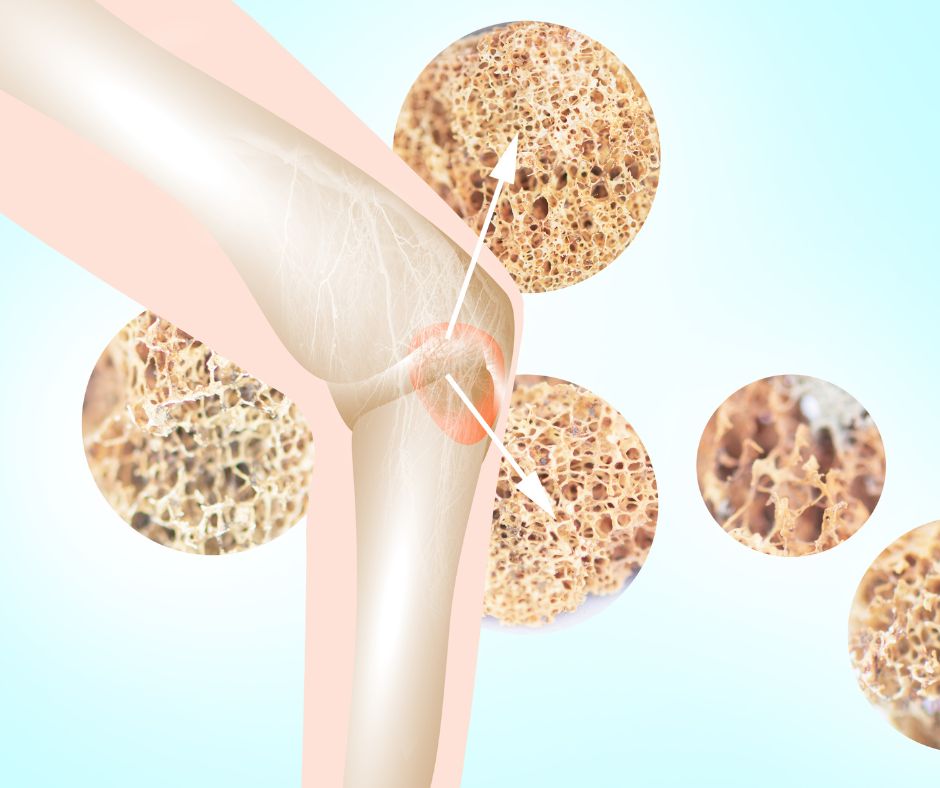
What is Osteoporosis?
Osteoporosis occurs when bones lose minerals more quickly than the body can replace them. This leads to a loss of bone thickness (or density) and can make your bones more likely to break from minor injuries or falls.
While loss of bone minerals is a normal part of ageing for everyone, those with the disease have bones that are more porous and full of holes, and therefore likely to fracture more easily.
In some cases of osteoporosis, even a simple sneeze can break a bone!
Any bone in the body can be affected by the disease, however the most common are the:
- Hip
- Spine
- Wrist
- Ribs
- Pelvis
- Upper Arm
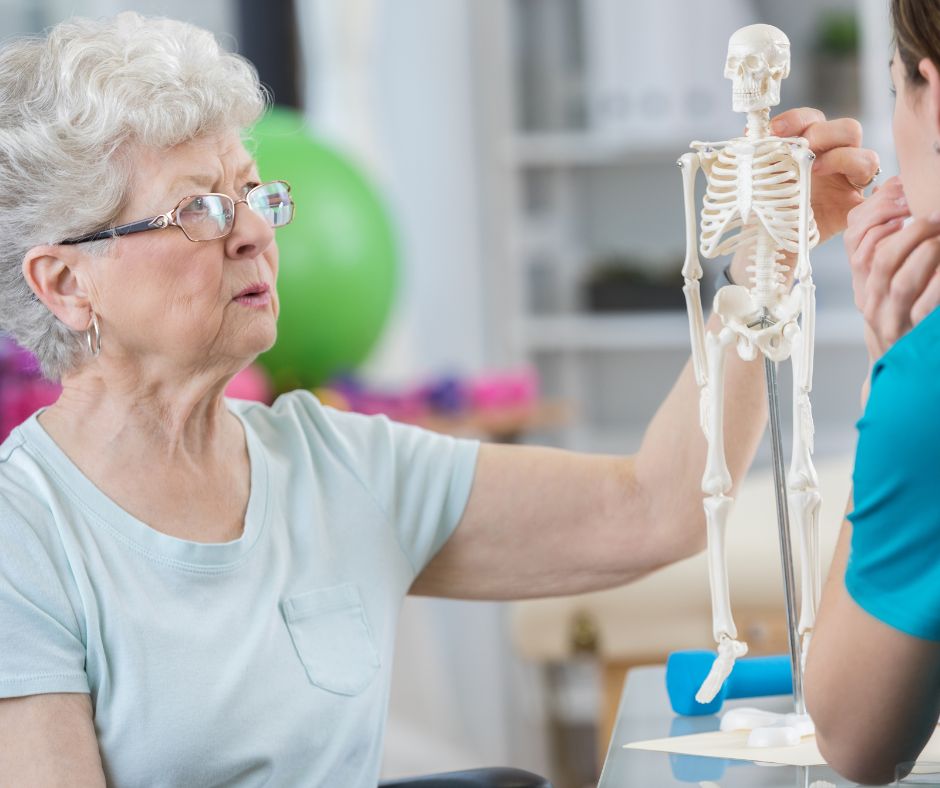
What are the symptoms?
Osteoporosis has no symptoms. In most cases, a fracture is often the first sign of the disease.
Some noticeable signs that may indicate osteoporosis include:
- a gradual loss of height;
- back pain; or
- a bone fracture from a minor knock to your limbs or a fall.
Risk factors for Osteoporosis
While there are no specific symptoms for the disease, there are a number of known risk factors. These include:
- Age – those aged 70 years and over are at greater risk of the disease.
- Gender – osteoporosis is more common in women. Those who experience early menopause are at even greater risk of developing the disease.
- Family History – your risk increases if either of your parents or a close relative had osteoporosis.
- Previous Fracture – if you have had a previous low trauma fracture, you are more likely to experience another fracture within 5-10 years after your first fracture. In fact, the risk doubles if you are female and is three to four times more likely to occur if you are male.
- Falls – if you are prone to falls, then you are more likely to experience a fall that results in a fracture. Exercises that build muscle strength and balance are a good way to help prevent falls.
- Medication – certain long-term medications can increase your risk of osteoporosis. These include prednisone and thyroid hormone replacement medications. If you do take these over the long term, your doctor may recommend bone density tests to monitor your bones and risk of developing osteoporosis.
To check your risk of developing osteoporosis, use the online “Know Your Bones” assessment tool created by the Garvan Institute of Medical Research.
Preventing Osteoporosis
There are a number of things you can do to help prevent the disease. These include:
- Giving up smoking, if you’re a smoker.
- Maintaining a healthy weight and lifestyle.
- Making sure you’re getting enough calcium in your diet. Calcium is one of the main building blocks of bones.
- Getting out in the sunshine for your Vitamin D fix, to help your body better absorb calcium.
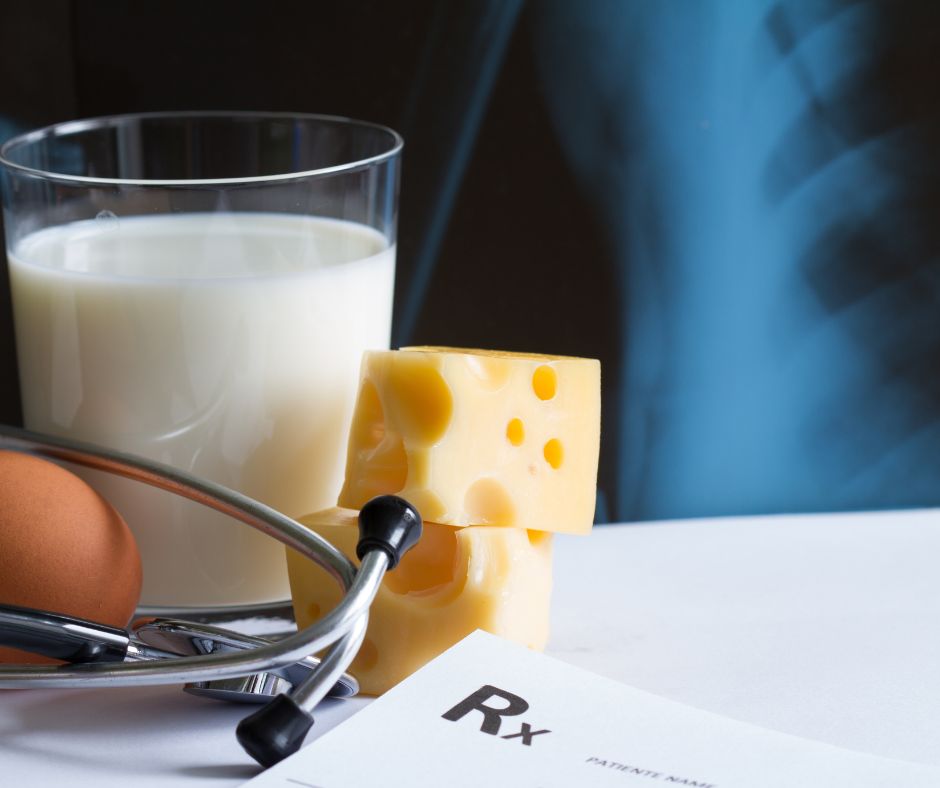
- Reducing your alcohol intake.
- Keeping physically active and including bone strengthening exercises (such as brisk walking or strength training) in your weekly routine, to help fragile bones heal and become denser and stronger.
- Working on your balance with balance training, to help improve your overall stability.
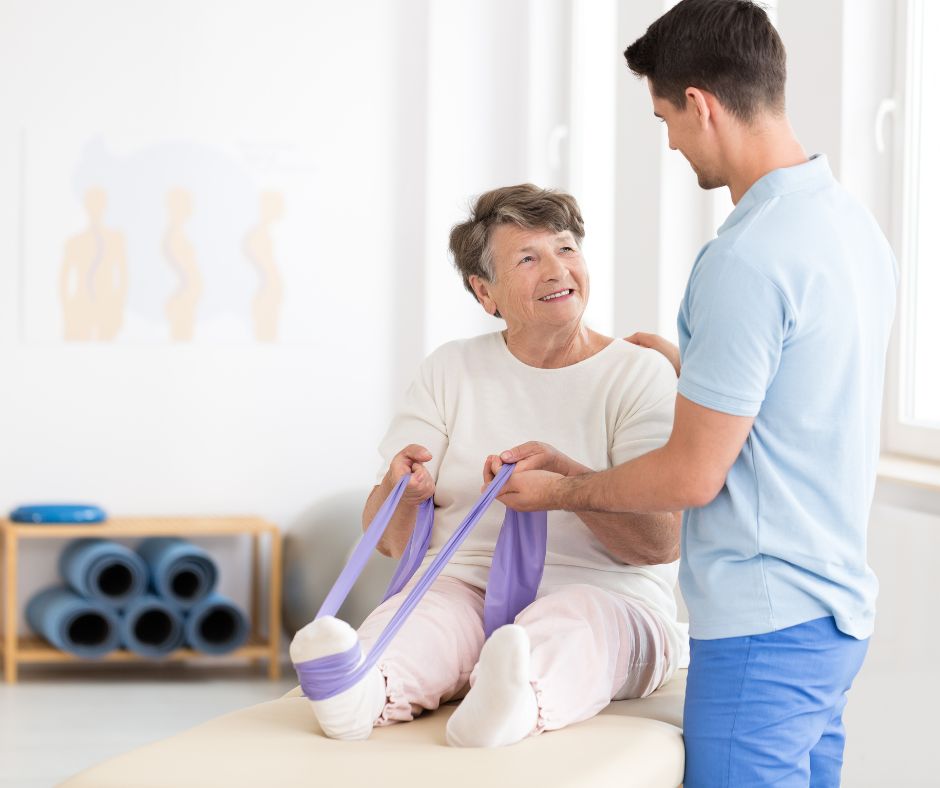
How is it diagnosed?
Osteoporosis is generally diagnosed through a bone mineral density test, combined with a look at your medical history and a physical examination by your doctor.
A bone density test involves a special x-ray which that assigns you a T-score and compares your bone density to the expected density for a healthy adult of your own age, gender and ethnicity.
If your T-score is -2.5 or less, this usually akun demo slot indicates you have osteoporosis.
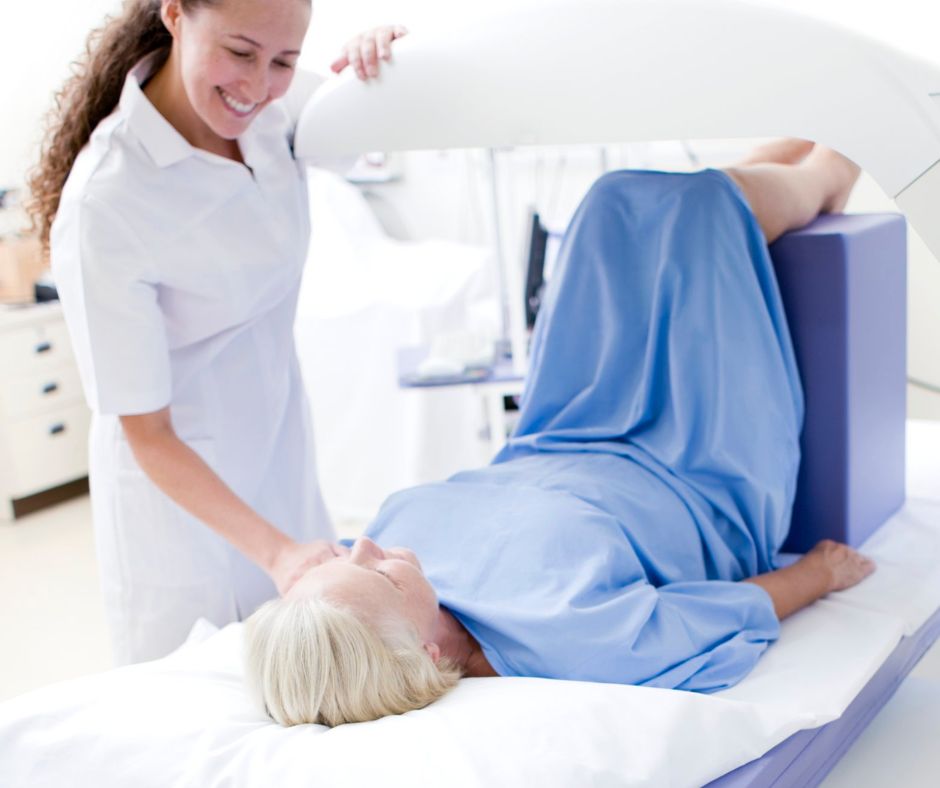
Treatment
While there is no cure for osteoporosis, it can be managed through medication and lifestyle changes. Your doctor will recommend the appropriate treatment for you based on your age, sex, and medical history.
Treating the disease early will give you the best chance of avoiding broken bones as you get older.
If you have any concerns about your bone health, make a booking with one of our GPs. Appointments can be made online through our Online Bookings page or by contacting us on (08) 9208 6400.
We also have appointments available with our in-house specialist endocrinologist – Dr Imran Badshah – with a referral from your GP. Dr Badshah consults on all aspects of endocrinology, including osteoporosis.
Where can I find out more information?
For more information on this topic, visit:
- Australian Institute of Health and Welfare – https://www.aihw.gov.au/reports/chronic-musculoskeletal-conditions/osteoporosis/contents/what-is-osteoporosis
- Garvan Institute of Medical Research – https://www.garvan.org.au/research/diseases/osteoporosis
- Healthy Bones Australia – https://healthybonesaustralia.org.au
- Health Direct – https://www.healthdirect.gov.au/osteoporosis
- HealthyWA – https://www.healthywa.wa.gov.au/Articles/N_R/Osteoporosis
- Jean Hailes for Women’s Health – https://www.jeanhailes.org.au/health-a-z/bone-health
- Know Your Bones Assessment Tool – https://start.knowyourbones.org.au/home
